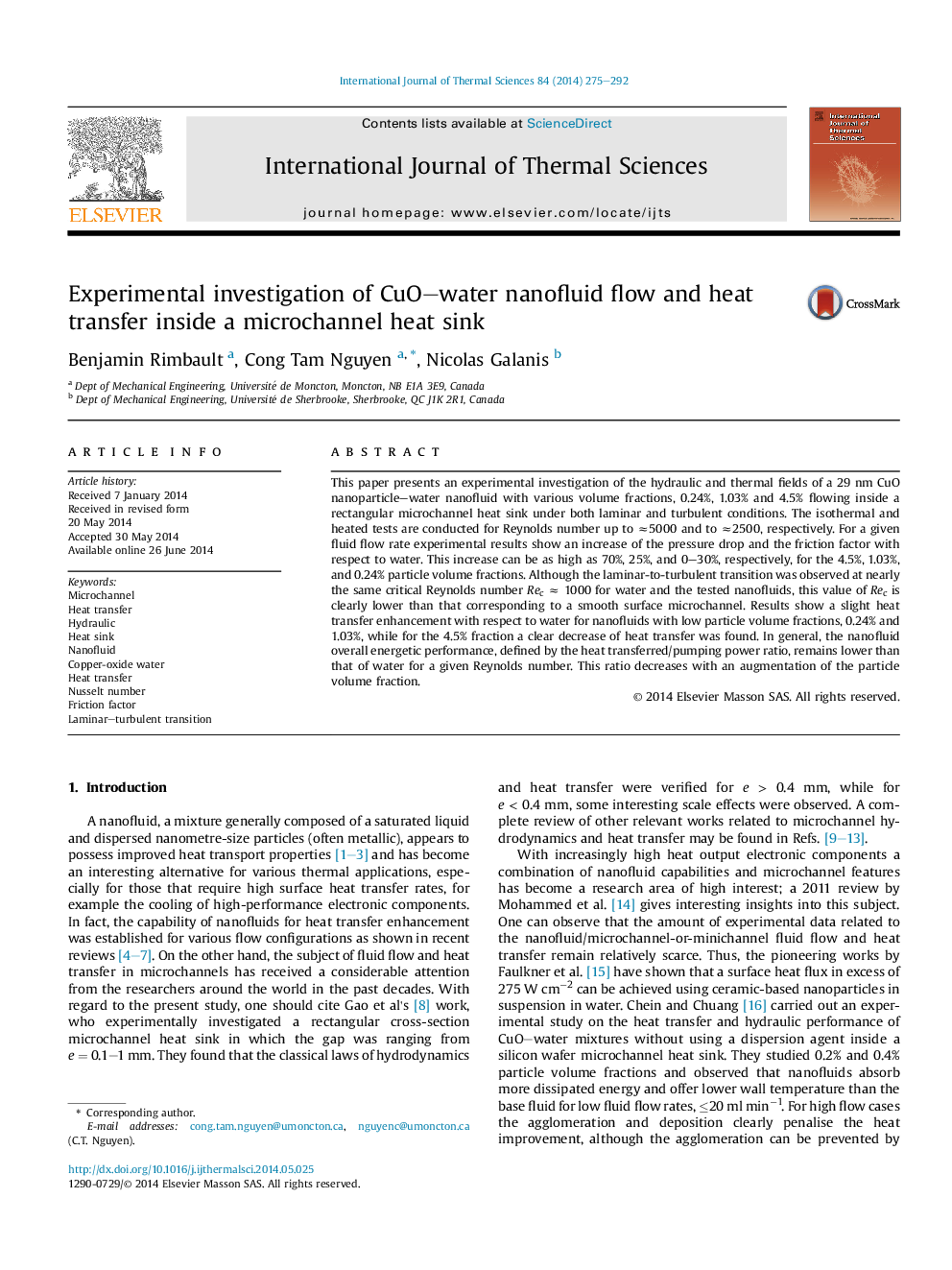| کد مقاله | کد نشریه | سال انتشار | مقاله انگلیسی | نسخه تمام متن |
|---|---|---|---|---|
| 668723 | 1458738 | 2014 | 18 صفحه PDF | دانلود رایگان |

• Experimental study of 29 nm CuO–water nanofluid in a microchannel heat sink.
• Tests performed up to Re ≈ 5000 (isothermal) and to ≈2500 (heated cases).
• Slight heat transfer enhancement observed for low particle volume fractions.
• Important increase of friction factor and pressure drop compared to water.
• Early transition to turbulence at Rec ≈ 1000 for both water and nanofluids.
This paper presents an experimental investigation of the hydraulic and thermal fields of a 29 nm CuO nanoparticle–water nanofluid with various volume fractions, 0.24%, 1.03% and 4.5% flowing inside a rectangular microchannel heat sink under both laminar and turbulent conditions. The isothermal and heated tests are conducted for Reynolds number up to ≈5000 and to ≈2500, respectively. For a given fluid flow rate experimental results show an increase of the pressure drop and the friction factor with respect to water. This increase can be as high as 70%, 25%, and 0–30%, respectively, for the 4.5%, 1.03%, and 0.24% particle volume fractions. Although the laminar-to-turbulent transition was observed at nearly the same critical Reynolds number Rec ≈ 1000 for water and the tested nanofluids, this value of Rec is clearly lower than that corresponding to a smooth surface microchannel. Results show a slight heat transfer enhancement with respect to water for nanofluids with low particle volume fractions, 0.24% and 1.03%, while for the 4.5% fraction a clear decrease of heat transfer was found. In general, the nanofluid overall energetic performance, defined by the heat transferred/pumping power ratio, remains lower than that of water for a given Reynolds number. This ratio decreases with an augmentation of the particle volume fraction.
Journal: International Journal of Thermal Sciences - Volume 84, October 2014, Pages 275–292